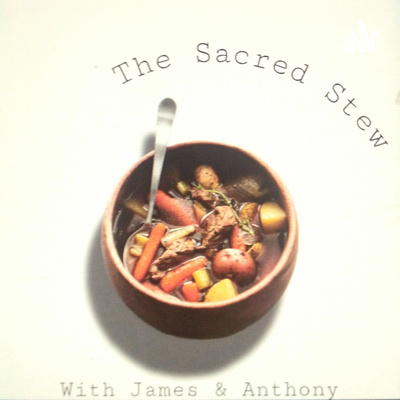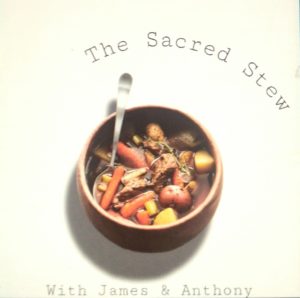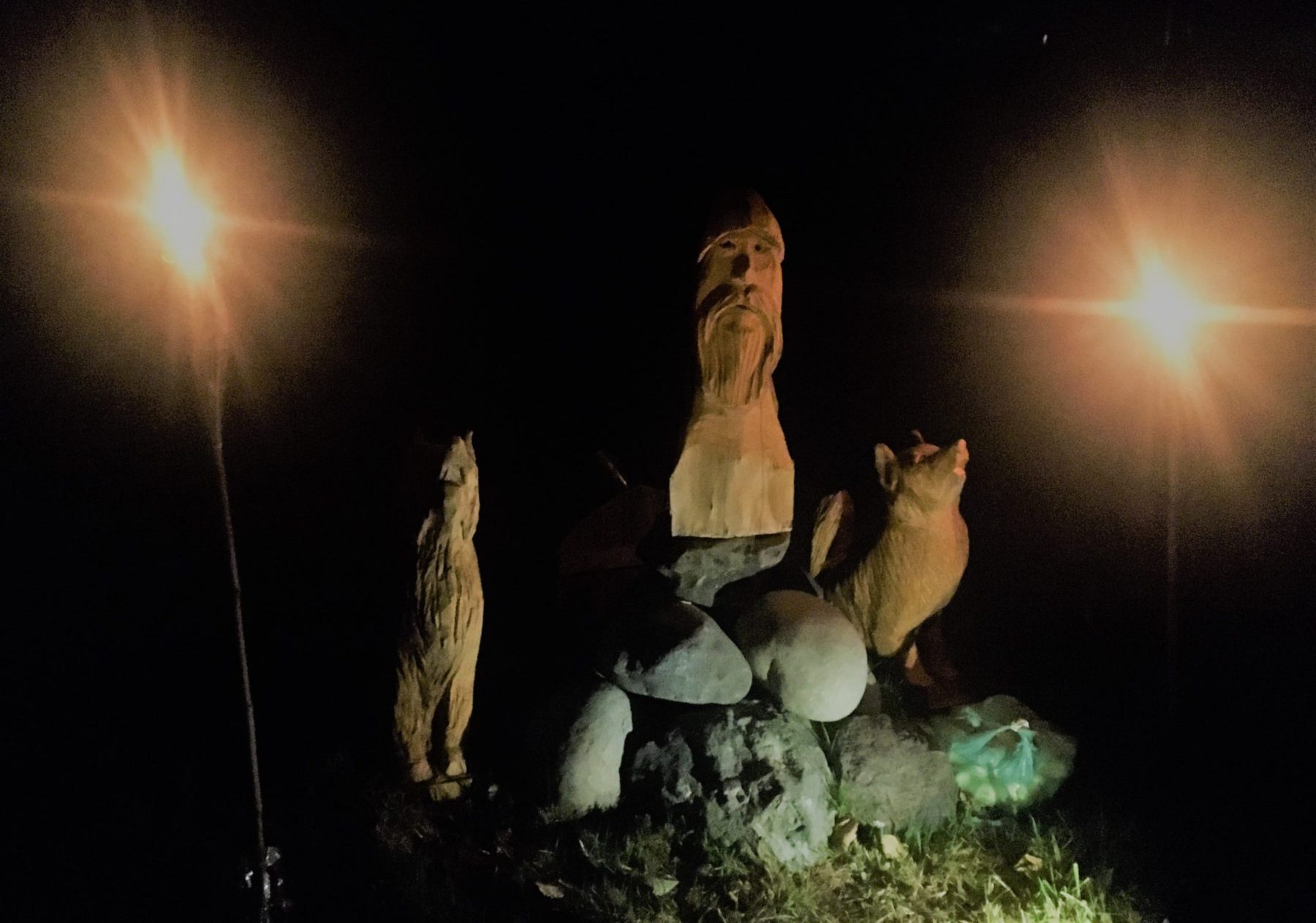Just how sacred was the bear to the germanic folk? This totem animal was considered so sacred that there was a name taboo on it; and this is why we call the bear what it is today i.e. “bear” which means “the brown one”. The incredible paintings in the Chauvet cave in South-eastern France include images of bears. This artwork depicts the now extinct cave bear and is around 30,000 years old! This animal has been an important aspect of the Indo European folk quite literally for tens of thousands of years. In ancient times, the bear symbolized the misseri cycle of winter and summer. The hibernation period begining at the start of winter and the awakening of hibernation during sumri (which in the surviving Icelandic Misseri Calander falls in April of the modern Gregorian calendrical system).
The motif of the bear traces itself to ancient times and sacred rites of passage that still have remenant memories in the folk consciousness to this day. The bear was considered to posses certain powers over nature and it’s regeneration in the spring (sumri). This parallels with Thor and is certainly why in the Skaldskaparmal, Snorri uses the name “Björn” (or Bear) as a heita (synonym) of Thor for he is the god that over sees and controls the weather and the growth of crops and nature for regenration in sumri or first summers day, or what we now call spring. The allusion of the gods in the form of animals is common in norse lore; Odin as the eagle, Frey as the Elk or Stag and so it is no wonder that Thor is also associated with such a magnificient creature like the bear.
The bear was more than a symbolic representation of the seasonal cycles, for in ancient times the bear was seen as a magical animal and totem (Fylgja) one that could pass its Hamingja to others. As Europe slowly became christianized there appears a transition of motifs regarding the bear that left survivng tales in later accounts of dragons with hidden lairs that hoard gold, and the hunt of some warrior to find and slay that dragon and recover his hidden treasure. This motif is nothing other than a hidden tale of the ritualized bear hunt from pre-christian times i.e. the dragon in a hidden cave which is the bear in the hidden cave. But what are these stories really telling us? What do they mean?
To find the answer to these questions an examination of known lore and its associations and mentions of the bear in these tales is prudent. However, upon examination of known Norse related text there is only a handful of direct references that exist which makes the obvious associations of the importance of the bear to the germanic folk not easily gleaned at a quick glance of the material. Some people believe that this small amount of surviving material was the result of the migrations of the folk to Iceland where bears did not exist and it is in Iceland where the majority of our known lore was perserved for future generations. Indeed, as Christianity spread through out Europe there was a consorted effort by christian priests, warriors and warlords to outlaw the sacred lore and history of the germanic tribes which were quickly subdued and conquered after the treacherous massacre of Verden by Charlemagne in 782 when more than 4,500 Jarls of the germanic/saxxon tribes were slaughtered. This allowed Charlemagne to consildate his power over much of continental Europe and what followed was a campaign to obliterate the native religion of the Germanic folk. As preists and warlords forced local populations to convert to this new foreign faith, the folk began to seek new lands and the era of the vikings began with migration to the Isles and lands west of continental Europe. It was during this same time frame that we see a transition of motifs in the sacred lore of the folk e.g. the bear becoming represented by the dragon which was also a foreign motif brought to europe from the east.
What we know from survivng lore about the bear is that this creature held certain magical properties. Icelandic material clearly ties this animal to hamrammr or shape shifting. This idea was probably best captured in the Hrólfs saga kraka where king Hrolf had great warriors in his bodyguard; Bjarki (which means “little bear”), the champion of King Hrolf of Denmark, was “said to fight in the form of a great bear in the ranks of the king’s army, while his human form lay at home and seemed asleep”. This tale is recorded in more than 40 known manuscripts and can be found in narratives from Denmark, Iceland, and Norway. The Skjǫldunga saga tells us that Boðvarr bjarki was a Norwegian and married one of King Hrólfr’s daughters. In the Hrólfs saga kraka it is explained that Bjarki is the son of Bera (she bear) and Bjorn (bear). This story presents us with a clear association of the bear cult still extant in Norse culture as late as the writings that recorded these events circa 1200 ce, almost 600 years after the events of Bjarki and King Hrolf in circa 600 ce. The narrative of these events tells us that Hrólfr kraki was the greatest king of Denmark during the Heroic Age. In his court at Hleiðargarðr he was surrounded by loyal servants and the greatest of champions; chief among them was Boðvarr bjarki. Despite his leading status among the champions of King Hrólfr, according to the most expansive accounts of the final battle at Hleiðargarðr, where King Hrólfr and all of his champions would eventually fall, Boðvarr bjarki was conspicuously absent from the initial stages of the battle as he was in his bed laying down. It was not until Boðvarr’s friend and fellow champion of King Hrólfr, Hjalti, awakened Bjarki to join the battle, and according to Hrólfs saga kraka, it was not until this moment that their defeat was sealed as Hrólfs saga tells of a large bear defending the king while Boðvarr was absent from the battle and suggests that Bjarki was laying in trance controlling the actions of the bear which was described as “men saw that a great bear went before King Hrolf’s men, keeping always near the king. He slew more men with his forepaws than any five of the king’s champions. Blades and weapons glanced off him, and he brought down both men and horses in King Hjorvard’s forces, and everything which came in his path he crushed to death with his teeth, so that panic and terror swept through King Hjorvard’s army…”. In the Bjarkarímur there is a ríma that records a similar story about Bjarki, and although it does not record Boðvarr Bjarki as the bear himself and Bjarki is not sleeping in this rendition of the story, he is clearly being associated with the actions of the bear during the battle.
While the tale of Boðvarr Bjarki is an extraordinary tale of a great warrior, one that many scholars suggest was a Beserker (Bear Shirt), to understand the association of the bear with this great warrior we should first look at what sort of magical association the bear has to the Berserker. In Grettirs Saga it tells of the story of a man named Bjorn (Bear) who throws Grettir’s cloak into the den of a bear. Grettir slays the bear, recovers his cloak, and returns with the bear’s paw as a token of his victory (it should be noted that the bear’s paw was also called hrammr). We have a similar motif in Hrolf’s saga when Boðvarr Bjarki has a protege, named Hjalti, who undergoes a simulated encounter as his initiation rite where Boðvarr slays a dragon-like beast (a kenning for a bear), then sets its skin up on a frame. Hjalti then “attacks” the beast and symbolically kills it before witnesses, earning his place among the warriors of the band. What is being described in these events is an ancient germanic initiation rite, one that goes back tens of thousands of years. To understand the meaning of this rite and its purpose we must look to another tale from the lore; the tale of Volund the smith.
The story of Volund the smith is recorded in the poetic edda in a poem titled Völundarkvitha. In this story the king of the Alfs had three sons Volund, Egil and Slagfiðr. Volund and his two brother venture out one night and found Valkyries also described as swans spinning flax by a river. The three brothers snuck up on these swans and took them home as their brides. After some time these Valkyrie wives had a longing for battle and they flew away. It is related that when Volunds bride left that she gave him a ring. Volunds two brothers chased after their brides while Volund himself stayed home in Ulfdalir (Wolf’s Valley). While in greif missing his beloved wife he sat there day after day on a bear skin (the bear skin is central to understanding this story, take note) while cooking bear steaks, making replica after replica of the gold ring his wife had left for him, slowly mastering the smithing arts. Stories of Völund’s proficiency in metal-work reached the ear of King Nidud. The king, desiring to use these skills for his own aggrandizement, kidnapped the smith and stole his rings, and imprisoned him on an island. To make sure Volund would not escape the king crippled and hamstrung him and forced him to forge items. While captive, Volund was able to trick two sons of the king with promises of a treasure, and once he was able to lure these boys he chopped off their head and feet, fashioning goblets from their skulls and sending these to the king. Böðvild, a daughter of king Nidud, took the ring Volunds bride had given him which was seized by the king and she tried to appease him with it. Volund then seduces her and gets her pregnant. Later, he flies to Niðhad’s hall where he explains all that he has done. Niðhad summons his daughter, asking her if Völundr’s story was true. The poem ends with Böðvild stating that she was unable to protect herself from Völundr as he was too strong for her, alluding that he had used powerful magic on her.
Volund is the same as Weyland (also spelled Wayland, Weland and Watlende), the smithing god of the Anglo-Saxon’s that was brought with the Saxon settlers to Brittain. As the son of the Alf King, Volund is Visi Alfa or Alfa Ljodhi (Prince of the Alfar or countryman of the álfar).The significance of Volunds story is over looked by most scholars and practioners of the ancient faith, but this is not without reason. The story as perserved in the poetic edda is incomplete and missing details. This story was also preserved in the Germanic Thidreks Saga, which features many of the same events as the Völundarkvitha, but begins by describing Velent (Völund) as the son of a giant . The Völundarkvitha portrays the story as if this is a tale of a depraved human. However, glimpses of Volunds importance to the religion of the Norse is attested by his mythological importance in a myriad archeological finds; runic inscriptions (a Frisian runic inscription ᚹᛖᛚᚩᛞᚢ wela[n]du ‘wayland’), casket inscriptions on burials, Gotlandic picture stones and even inscribed on crosses in England. We can imagine some association of Volund with death, but why?
What remains of the story from germanic sources on Volund is very late and incomplete. As prince of the Alfar or countryman of the álfar, Volund’s story actually originates with these folk. The Finns (from El-ven) are the decsendents of the Alfar and there exists a preserved tradition more complete than the one contained in the poetic edda. The Völundarkvitha in the poetic edda undergoes a stylistic shift 1/3 of the way through the poem. The first 50 lines are in the third person and the next 111.5 lines contain 75.5 lines that are direct speech, as if it is the character themself speaking. This is a 67% stylistic change in the content from 0%. The change in style occurs when Volundr awakes imprisoned, so that the account of Volundr‘s history prior to his capture is a lot different than his interaction with Nidud and the revenge sequence. Such a radical shift in narration is usually regarded as a revision to a work. It is likely that this shift is the result of the compiler merging two stories or is missing a significant portion of the story.
There is a broader Indo European motif of Swan Maidens that we can look at. The stoy of VOlund in the Völundarkvitha shares the following in common with this broader tale:
- The brides arrive abruptly.
- They are in or have swan-forms.
- They are found in proximity to water.
- They depart much to the disturbance of their lovers.
- There are three of them.
If we examine the tradition preserved in the poetic edda more closely with these broader Indo European traditions we can arrive at a deeper understanding of Volund, the rituals which surround this tale and what his mythological importance is to the Norse and the broader germanic folk. The story depicts the departure of the swan maidens as the migratory pattern of birds (birds are often used to describe souls), and thus if we consider why Volund did not chase after his bride as his two brothers did, it was because he knew she would return in the spring. We find this same motiff in surviving Alfar, Celtic and Slavic traditions. What’s of important note as part of Volund’s story is that after his bride leaves him, he sits on a bear skin.
The associations and characterization of a bear and Volund becomes clearer with a deeper dive into the literary descriptions of him. As the poetic edda describes volund he is sitting on a bear skin, he is making bear steaks consuming the bear at which point he is referred to as brunni, or ‘brown one’, a noa-word for ‘bear’ and later in the story Volund bares his teeth like a wild animal and is called dyr (animal). This is interesting because these descriptions are made after his capture and imprisonment by the King, juxtaopposed to the tranquility and peaceful nature of Volund while he was in the forest. The symbology of this clearly relates to an ancient bear tradition of the germanic folk; one that still lived into the collective memories of the folk long after the conversion era of europe.
The germanic bear cult was unique among Indo European traditions. The only parallel we find to the germanic bear tradition in all of europe are from the Finnic people, known from the lore as the Alfar. There is a parallel between the prince of the alfar i.e. Volund, to these traditions. In the finnic tradition the bear originated from the sky and one of the biggest threats to its spirit is a tempest. The Finn also called bears the “god’s dogs”, which is an interesting concept if we were to consider the “Wolves” of Odin in the norse tradition were actually bears. It was believed that the wolf and the bear were related. Looking at the Berserker (bear shirts) legends in germanic lore we see both the wolf and the bear as animals these warriors would wear the skins of during battle.
The finnic folk conceived of the bear as the spirit of the forest and reffered to him as the god of the forest as this creature was understood to have power over nature, fertility, seasonal cycles (misseri) and its hibernation was seen as a trance or death like state which explains why there was a taboo on killing a sleeping or hibernating bear. We can assume this taboo was prevalent not only among the finnish folk but also the germanic folk as even in modern language we have expressions such as “don’t poke the bear”. This originates from the taboo of not bothering a hibernating bear, as misfortune could befall you. The finnic folk specifically believed that killing a sleeping bear could cause the bears spirit to come back and cause you harm and bad luck as its spirit is free and wandering during its sleep.
Rituals surrounding bear hunts and killing was an essential rite of passage. However, in these ritualized killings the bear’s spirit could be brought back to life by beating the bearskin, which would bring the spirit of the bear back to life so its spirit could return to the sky. This is also why both the finnic and germanic folk would hang the bear’s skull from trees. The beating of the bear with sticks with brass rings was essential to resurrecting the bear from death as the “ring” on the stick would bind or transfer the bear’s power and spirit. It is likely these sticks were used as magical wands or gandr sticks as it is known in the Norse tradition.
The actual hunt itself was a process that involved at least three people. The shaman that located the lair earlier in the year would come with a drum, the “rod man” that carried the stick with the brass ring and finally the hunter. The rod man would arouse the spirit of the bear with the rod and brass ring though the cave and the shaman would beat his drums to effect the trance like sounds that help guide spirits. When the bear was aroused and came out of the lair, the hunter would kill the bear with one stroke as the bear exited the cave. The rod man would then beat the bear with the rod with the brass ring on it. As the hunters returned to the village they would have been effected by the power of the bear’s spirit and upon returning to the village women could only look upon the men and the bear through a brass ring, perhaps to filter their view. Using holes to look towards the sun through clouds was a navigational method used for centuries among captains before the advent of viewing glasses or crystals. Something interesting to this concept is that in saami graves in finland, 80% of the graves contained brass rings. This almost certainly had to do with the bear or its spirit as being the guardian between worlds and was associated with the land of the dead.
Bears have the ability to understand human speech. This is what led to a name taboo on the animal not just in germanic tongues but also the finnic languages. In fact the finns have more than 200 identified words for a bear. Ethnographers often considered this to be a secret language among these hunters.
Just like the story of Bjarti from Hrolfs saga whose parents are said to be bears, the finns also shared a common tradition of marriage and romances between bears and women and this is where the origin of the bear hunt is said to come from. There were three reasons for the Finnic folk to do ritualized killing of a bear; 1) To trick the bears spirit into thinking it had not actually been killed and placate it so the hunters would not be harmed or haunted by the bear spirit, 2) Return the bear’s spirit to the sky from which it comes and 3) To facilitate “luck” for hunting in the future. The ritualized return to the viallage with the bear would also be a representation played out symbolically during finnish wedding ceremonies.
The finnish tradition may appear more totemic than the norse or germanic stories or lore at first glance but there is a deeper level to this sacred animal i.e. bear and its place within germanic spirituality than most .people realize. For the germanic folk the bear was seen as a fylgjar, however, outside of a few marauding stories where real world hunting and killing of the bear was seen as a heroic act, to that of slaying a “dragon”. The lack of information on this may in fact be attributable to the icelandic migration where bears did not exist. So the excitement of going on the “bear hunt” was even more heroic as such a journey would require dangerous adventures across the sea. Yet the significance of the hunt was still captured, though in sparse detail in a few literary places.
In Viga-Glums saga, Glumr cuts off the snout of a bear to hold as evidence of him killing a bear, which we see as a similar act in Grettis saga wherein Grettir produces the paw of the bear to prove he has killed it. These acts are ritualized actions which in the finnic tradition finalized the ritual. We can assume that a similar process played out during these bear hunts for the norse and germanic folk albeit, time and separation of the icelanders from the homeland from which they came probably changed the bear’s role and significance for our folk.
What do we know from germanic sources about the bear?
- Bear, or Bjorn, was a Byname of Thor who was the son of mother earth and the skyfather.
- Adam of Bremen described Thor as in charge of crops, weather and controlled this power of nature.
- In sweeden when wind blows through grain they say “grain-bear”.
- According to Jakob Grimm winter was called bjarnarnott, ‘bear’s night.
- In 0rdar-Oddssaga it says that when a bear is in hibernation, “liggr allan vetr i dai, en at sumri stendr bann upp”. “Dai” meaning a trance like sleep or state giving the verb of “deyu” for death or to die.
- Ordar-Oddssaga recounts a story of a Giant capturing a bear and calling it “God’s dog”, the same reference used by the Finnic folk. Possesing this bear qualifies the Giant to rule his land.
- Saxo Grammaticus replaces the dragon faced by Ragnar Lodthbrok in his saga, to that of a wolf and a bear, another pairing that matches the finnish tradition.
- Snorri used “Bestingr” in the prose edda, which means “bridled one” as a kenning for a bear.
- Several references in the sagas and at least 1 reference in the poetic edda of people using or sitting on Bear Skins to perform magic.
- Gleipnir, the chain that binds Fenrir is made by several ingredients, one being the sinew of a bear (possibly meaning penis, which would certainly be tied to its potentacy).
- Graves in Germanic Scandanavia are laid out with bodies wrapped in bearskins.
- Cremation burials in Germanic Scandanavia including Denmark where bear claws were place with the ashes of the dead. In Denmark these were imported to the area, which supports the thesis that these were used in a ritualistic manner.
- Saxo Grammaticus recounts a story about a woman kidnapped by a bear and becoming pregnant.
- Horlfs saga explains how eating the meat of a bear results in exceptional qualities and animal like abilities in unborn children.
- Saxo Grammaticus tells us about how drinking the blood of a bear transfers its power to the person consuming it.
- In a church in Frosoin Jamtland, bones of bears have been found, indicating some sort of ritualized site.
- In Ordar-Oddssaga, Oddr sets up the head and skin of a bear on a pole to protect against evil land spirits.
- Numerous germanic folk tales are told about romances between women and bears where the bear takes the woman to a place where it has a hoard of treasure, following the maiden/swan like stories mentioned above and in the account of Volund.
- A germanic fairy tale called Snow White And Rose Red tells of a tale of a bear who had spread its hoard throughout the woods; the bear dwells with maidens for some time while the earth is frozen and cold and it must prevent its treasure from being stolen during the thaw. In the story the bear tears its hide to reveal its gold. In this same tale it speaks about girls entertaining themself by beating a hide- very similar to how the sami women would beat a bears hide.
- Saxo relays a story about Skioldus’ battle with a bear where Skioldus is without weapon and he binds the bear with a belt instead of slaying it. The bear is later killed by his followers. Skioldus is able to gain power through these actions.
There is no doubt that the germanic and norse folk had a bear tradition that played an essential role in their faith and religion. The bear clearly held special significance in regard to its “powers” and is clearly tied to magical acts and a means or mode of regeneration or rebirth. Because of the lack of bears in Iceland and Denmark, the two places where most of the surviving lore was preserved, the emphasis and knowledge about the bear tradition was sparsely mentioned when it was written or mentioned by authors that wrote these tales and stories hundreds of years after the conversion of the germanic folk to christianity. However, from what has survived it is possible to reconstruct the bear tradition to some extent.
To our germanic ancestors the bear held powers which could be transferred upon others by a ritualized process that bound the bears spirit. This binding was the means by which the power of the bear could be harnessed and controlled. This is why the bear hunt was an essential rite of passage. Clan cheiftains would acquire their authority through this rite and warriors would be initiated by either reenactment of this ritual or by participating in a bear hunt, possibly being the one required to kill the bear during the hunt. Warriors would then drink the blood of the bear to receive its qualities, strength and magical abilities. The bears skin would only be worn by the Chieftain and clan Elders that had participated in the binding of a bear; while young warriors and elders that had not participated in the bear hunt would wear wolf skins, which was viewed as related to the bear as its little brother, this is why we see some descriptions of Berserkers as wearing wolfskins. In some instances, the clan cheiftain would pass their bear skin to their successor as a means of transfering its authority and power to the person receiving this magical item.
Any mention of a bear tradition in germanic lore automatically conjures images of crazed warriors on battlefields. These warriors were known as Beserkers and it is from these brave fighters that we get the modern word “to go beserk”. Beserk actually translates as “Bear-shirt”. These warriors were known to be closely tied to the worship of Odin, the god that grants victory in battle. But what has odin to do with the bear, whom thor has been definitively associated with? It is known in lore that both Odin and Thor have taken the forms of a bear, and while the power over nature that the bear has is clearly linked to the powers of Thor, the bear tradition has profound parallels to other aspects of the norse lore with regenerating rings similar in quality to Odins ring Draupnir which produces new rings every 9 nights. Interestingly, there is another connection to these rings in the story of Nanna (Baldr’s wife) another woman “taken away for a period” and whose name means “Maiden Woman”, wherein she returns from hell every so often (Spring) to give Frigga and Fulla gifts. The gift she provides to Fulla is a golden ring. In norse lore these golden rings have usually been associated with nature and rebirth and this is certainly the case in regard to Odins regenerating rings. When Odin receives Draupnir as a gift, this golden ring certainly symbolized the transference of power to Odin over its magical qualities. When Thor received his “magical golden belt”, megingjörð, this could also be a ring of sorts that transferred authority to Thor and gave him the powers over nature. The symbology is profound.
Saxo retells of a story where Hotherus must travel on a journey to find the only weapon that can Kill Balderus (Baldr), Hotherus travels long and far to the wilderness wherein he sets up a camp in the shadow of a cave. He is there so long that he is hunting other animals for food while he awaits the “Satyr of the woods”, after sometime the shadow of the ‘satyr of the woods’ (Possibly a noa term for bear) lands on his tent. Hotherus brings this creature down with a single thrust of a spear. He then ties and bounds it and demands the creature to give him the weapon that will kill Balderus (a sword) and ring similar to draupnir. This account is describing a ritualized bear hunt. It is also interesting that Hotherus also waits for this creature to appear from the cave, alluding to the taboo against killing a hibernating bear.
There can be no doubt from these traditions that these rings and the power that the bear had over nature had everything to do with life, death and rebirth. This is why we find germanic burials with warriors wrapped in bear skins; and the same reason the Berserkers wore these same skins during battle, for those slain in these magical hides would be reborn, as the bear (a form of Fylgja) would guide the soul to its rebirth to one day fight in Ragnarok by the side of Odin. While the rings found in burial sites would indicate a more general charm for rebirth for the dead.
This cycle of life, death and rebirth was conveyed by the “Hamingja” of the bears power to the soul of the germanic folk and was seen as a potent aspect of fertility. It is no wonder that the ritualized bear hunt was also an important function of the ancient germanic marriage ceremony. Draupnir, the ring that drops 8 rings every ninth night is also a kenning used for women, but as we know from norse literature the ring never falls into the posession of women. Odin is the holder of Draupnir and he is known as the progenitor of geneologies and family lines. This is important because the ring represents identity. During the germanic marriage ceremony the transfer of a sword and a ring represented the transfer of ones identity to the other. The husband would provide a sword (possibly any pointed weapon) to his wife or possibly his wife’s family, this would represent his protection over her and the wife would give the husband a ring (which developed in later traditions to be a maidens cup-a ringed vessel), which represented her giving the husband power over her identity or soul/spirit. In germanic theology it is understood that a child receives their soul qualities from their father, and that a woman assumes the soul qualities of her husband. This is the ritual process by which this spiritual transfer happens and by which the soul of the woman is bound to that of the husband. This ceremony ties directly to the bear tradition.
In the context of ritual bear hunts, the ancient wedding ceremony would involve a reenactment of a bear hunt where a bride would be offered as food for the bear. The husband would wear the skin of the bear and the wife or family of the wife would symbolically slay and beat the bear; this was a ritual act of fertility done as part of the marriage ceremony. In Saxo’s danish history he tells an account of a wedding ceremony where the husband is named Bjorn (Bear) and the wife is called Bera (she bear) and although he does not directly tie his word usage to the bear tradtion, it does show that this tradition certainly existed and lived on in the minds of men hundreds of years after the christian conversion period of europe.
The bear has always played an important part of the world for our folk. Its skins were used to show authority and rank, used for magical acts of traveling and controlling certain aspects of nature. It was seen as a mode of migrating the soul to different places and reincarnating dead warriors to join Odin at the Battle of Ragnarok. And although we may lack a lot of information about rituals surrounding the bear, it still holds a great power over the world, as its sinews are used as part of Gleipnir to restrain the destruction of Fenrir, the spawn of Loki. The bear offers protection to the folk and in this wolf age that we now live in, calling back the spirit of the bear in our traditions can give us strength, fertility and power against the forces of destruction.
Hail The Brown One!





